The Environmental Sustainability Study of an Airport Building System Based on an Integrated LCA-Embodied Energy (Emergy)-ANN Analysis
Abstract
1. Introduction
- How is the LCA-Emergy-ANN method framework designed?
- How is the emergy boundary of the whole life cycle of the building system controlled?
- How to define and select evaluation indicators to assess sustainability?
- How to analyze the sensitivity of emergy analysis results?
- What are sustainable building system measures? How to determine the effect of improvement?
2. Methodology and Case
2.1. Analysis Framework
2.2. Emergy Introduction
2.2.1. Basic Emergy Calculation
2.2.2. LCA-Emergy Element Calculation Model
- (1)
- Solar irradiation model
- (2)
- Mass Calculation Model
- (3)
- Electricity calculation model
- (4)
- Water emegy model
- (5)
- Diesel fuel emergy model
- (6)
- Gasoline emergy calculation model
- (7)
- Human labor emergy calculation model
2.2.3. Emergy Diagram
2.2.4. Sustainable Indicators
- (1)
- Emerge intensity (Ep) represents the emergy per person.
- (2)
- Emergy per RMB (Ee) demonstrates the amount of emergy per unit of money.
- (3)
- Emergy density (Ed) illustrates the emergy per unit area.
- (4)
- Renewability rate (Re) explains the proportion of renewable inputs.
- (5)
- Non-renewability rate (Nr) displays the proportion of non-renewable inputs.
- (6)
- Non-renewability rate of purchased resource (Np) shows the ratio of non-renewable resources purchased.
- (7)
- Purchased emergy dependence level (Pe) describes the proportion of resources purchased by external inputs.
- (8)
- Emergy investment ratio (EIR) instructs emergy ratio of external investment.
- (9)
- Environmental loading ratio (ELR) represents the system’s load pressure on the environment.
- (10)
- Emergy yield ratio (EYR) expresses the emergy independent level in the system.
- (11)
- Emergy sustainability index (ESI) states the sustainability degree of the target system. According to the standard [41], the basic criteria is ESI = 1(if ESI < 1, unqualified).
2.2.5. Sensitivity Analysis
2.3. Artificial Neural Network (ANN) Method
2.4. Case Study
3. Results and Discussion
3.1. LCA-Emergy Analysis
3.2. Sustainable Indicators Analysis
3.3. Sensitivity Analysis
3.4. Unit Emergy Value (UEV)
3.5. ANN-Emergy Analysis
4. Improved Sustainable Design
4.1. Clean Energy Embedded Design
4.2. A Coupling Design of Landscape Subsystem
5. Conclusions
Author Contributions
Funding
Institutional Review Board Statement
Informed Consent Statement
Data Availability Statement
Conflicts of Interest
References
- DeAngelis, D.L.; Franco, D.; Hastings, A.; Hilker, F.M.; Lenhart, S.; Lutscher, F.; Petrovskaya, N.; Petrovskii, S.; Tyson, R.C. Towards Building a Sustainable Future: Positioning Ecological Modelling for Impact in Ecosystems Management. Bull. Math. Biol. 2021, 83, 107. [Google Scholar] [CrossRef] [PubMed]
- Ping, L.; Yang, L. Ecological technology of green building in the initial stage of design based on BIM technology. J. Exp. Nanosci. 2023, 18, 2170355. [Google Scholar] [CrossRef]
- Adamczyk, J.; Dylewski, R.; Sobierajewicz, P. Economic and ecological benefits of thermal insulation of external partitions depending on the temperature in residential premises. J. Clean. Prod. 2023, 384, 135622. [Google Scholar] [CrossRef]
- Roostaie, S.; Nawari, N. The DEMATEL approach for integrating resilience indicators into building sustainability assessment frameworks. Build. Environ. 2022, 207, 108113. [Google Scholar] [CrossRef]
- Andrea, V.; Wei, Z.; Lixing, G.; Ni-Bin, C.; Martin, P.W. Synergies of green building retrofit strategies for improving sustainability and resilience via a building-scale food-energy-water nexus. Resour. Conserv. Recycl. 2022, 176, 105939. [Google Scholar]
- Timothy, O.O.; Daniel, W.M.C. Cloud-based sustainability assessment (CSA) system for automating the sustainability decision-making process of built assets. Expert Syst. Appl. 2022, 188, 116020. [Google Scholar]
- Ferhat, K.; Mert, G.; Aiganym, K.; Dina, K.; Serik, T. A new stakeholder opinion-based rapid sustainability assessment method (RSAM) for existing residential buildings. Sustain. Cities Soc. 2020, 60, 102155. [Google Scholar]
- Fatourehchi, D.; Zarghami, E. Social sustainability assessment framework for managing sustainable construction in residential buildings. J. Build. Eng. 2020, 32, 101761. [Google Scholar] [CrossRef]
- Lazar, N.; Chithra, K. Benchmarking critical criteria for assessing sustainability of residential buildings in tropical climate. J. Build. Eng. 2022, 45, 103467. [Google Scholar] [CrossRef]
- Soust-Verdaguer, B.; Galean, I.B.; Llatas, C.; Montes, M.V.; Hoxh, E.; Passer, A. How to conduct consistent environmental, economic, and social assessment during the building design process. A BIM-based Life Cycle Sustainability Assessment method. J. Build. Eng. 2022, 45, 103516. [Google Scholar] [CrossRef]
- Jim’enez-Pulido, C.; Jim, A.; García-Navarro, J. Improved sustainability certification systems to respond to building renovation challenges based on a literature review. J. Build. Eng. 2022, 45, 103575. [Google Scholar] [CrossRef]
- Alhilli, H.K.; Burhan, A.M. Developing a system for assessing the sustainability in school building projects. Environ. Dev. Sustain. 2021, 23, 17483–17502. [Google Scholar] [CrossRef]
- Balasbaneh, A.T.; Yeoh, D.; Ramli, M.Z.; Valdi, M.H.T. Diferent alternative retroft to improving the sustainability of building in tropical climate: Multi-criteria decision-making. Environ. Sci. Pollut. Res. 2022, 29, 41669–41683. [Google Scholar] [CrossRef] [PubMed]
- Asim, N.; Badiei, M.; Mohammad, M.; Razali, H.; Rajabi, A.; Haw, L.C.; Ghazali, M.J. Sustainability of Heating, Ventilation and Air-Conditioning (HVAC) Systems in Buildings—An Overview. Int. J. Environ. Res. Public Health 2022, 19, 1016. [Google Scholar] [CrossRef] [PubMed]
- Lazar, N.; Chithra, K. Comprehensive bibliometric mapping of publication trends in the development of Building Sustainability Assessment Systems. Environ. Dev. Sustain. 2021, 23, 4899–4923. [Google Scholar] [CrossRef]
- Lazar, N.; Chithra, K. Green Building Rating Systems from the prospect of sustainability dimensions through the building lifecycle. Environ. Sci. Pollut. Res. 2021, 29, 51054–51064. [Google Scholar] [CrossRef]
- Tupenaite, L.; Zilenaite, V.; Kanapeckiene, L.; Gecys, T.; Geipele, I. Sustainability Assessment of Modern High-Rise Timber Buildings. Sustainability 2021, 13, 8719. [Google Scholar] [CrossRef]
- Pan, X.; Guo, S. Dynamic decomposition and regional differences of urban emergy ecological footprint in the Yangtze River Delta. J. Environ. Manag. 2023, 326, 116698. [Google Scholar] [CrossRef]
- Zhao, S.; Yan, K.; Wang, Z.; Gao, Y.; Li, K.; Peng, J. Does anaerobic digestion improve environmental and economic benefits of sludge incineration in China? Insight from life-cycle perspective. Resour. Conserv. Recycl. 2023, 188, 106688. [Google Scholar] [CrossRef]
- Zhu, Y.; Li, M.; Lu, S.; Wang, H.; Wang, J.; Wang, W. Research on the Input–Output Model of the Rural Agricultural Eco-Economic System Based on Emergy Theory. Sustainability 2022, 14, 3717. [Google Scholar] [CrossRef]
- Zhang, H.; Asutosh, A.T.; Zhang, J. A quantitative sustainable comparative study of two biogas systems based on energy, emergy and entropy methods in China. Environ. Dev. Sustain. 2022, 24, 13583–13609. [Google Scholar] [CrossRef]
- Zhang, J.; Ma, L. Urban ecological security dynamic analysis based on an innovative emergy ecological footprint method. Environ. Dev. Sustain. 2021, 23, 16163–16191. [Google Scholar] [CrossRef]
- Zhang, J.; Ma, L. Environmental Sustainability Assessment of a New Sewage Treatment Plant in China Based on Infrastructure Construction and Operation Phases Emergy Analysis. Water 2020, 12, 484. [Google Scholar] [CrossRef]
- Paneru, S.; Jahromi, F.F.; Hatami, M.; Roudebush, W.; Jeelani, I. Integration of Emergy Analysis with Building Information Modeling. Sustainability 2021, 13, 7990. [Google Scholar] [CrossRef]
- Zhang, J.; Zhang, H.; Asutosh, A.T.; Sun, N.; Fu, X.; Wang, H.; Li, X. Ecological sustainability assessment of building glass industry in China based on the point of view of raw material emergy and chemical composition. Environ. Sci. Pollut. Res. 2023, 30, 40670–40697. [Google Scholar] [CrossRef]
- Thomas, T.; Praveen, A. Emergy parameters for ensuring sustainable use of building materials. J. Clean. Prod. 2020, 276, 122382. [Google Scholar] [CrossRef]
- Zhang, J.; Srinivasan, R.S.; Peng, C. A Systematic Approach to Calculate Unit Emergy Values of Cement Manufacturing in China Using Consumption Quota of Dry and Wet Raw Materials. Buildings 2020, 10, 128. [Google Scholar] [CrossRef]
- Zhang, J.; Srinivasan, R.S.; Peng, C. Ecological Assessment of Clay Brick Manufacturing in China Using Emergy Analysis. Buildings 2020, 10, 190. [Google Scholar] [CrossRef]
- Cristiano, S.; Gonella, F. To build or not to build? Megaprojects, resources, and environment: An emergy synthesis for a systemic evaluation of a major highway expansion. J. Clean. Prod. 2019, 223, 772–789. [Google Scholar] [CrossRef]
- Yi, H.; Srinivasan, R.S.; Braham, W.W.; Tilley, D.R. An ecological understanding of net-zero energy building: Evaluation of sustainability based on emergy theory. J. Clean. Prod. 2017, 143, 654–671. [Google Scholar] [CrossRef]
- Lee, J.M.; Braham, W.W. Building emergy analysis of Manhattan: Density parameters for high-density and high-rise developments. Ecol. Model. 2017, 363, 157–171. [Google Scholar] [CrossRef]
- Andri, I.; Pina, A.; Ferrao, P.; Lacarriere, B.; Corre, O.L. The impact of renovation measures on building environmental performance: An emergy approach. J. Clean. Prod. 2017, 162, 776–790. [Google Scholar] [CrossRef]
- Yi, H.; Braham, W.W. Uncertainty characterization of building emergy analysis (BEmA). Build. Environ. 2015, 92, 538–558. [Google Scholar] [CrossRef]
- Yi, H.; Srinivasan, R.S.; Braham, W.W. An integrated energyeemergy approach to building form optimization: Use of EnergyPlus, emergy analysis and Taguchi-regression method. Build. Environ. 2015, 84, 89–104. [Google Scholar] [CrossRef]
- Cui, W.; Hong, J.; Liu, G.; Li, K.; Huang, Y.; Zhang, L. Co-Benefifits Analysis of Buildings Based on Differenewal Strategies: The Emergy-Lca Approach. Int. J. Environ. Res. Public Health 2021, 18, 592. [Google Scholar] [CrossRef]
- Chen, X.; Wang, H.; Zhang, J.; Zhang, H.; Asutosh, A.T.; Wu, G.; Wei, G.; Shi, Y.; Yang, M. Sustainability Study of a Residential Building near Subway Based on LCA-Emergy Method. Buildings 2022, 12, 679. [Google Scholar] [CrossRef]
- Wang, H.; Liu, Y.; Zhang, J.; Zhang, H.; Huang, L.; Xu, D.; Zhang, C. Sustainability Investigation in the Building Cement Production System Based on the LCA-Emergy Method. Sustainability 2022, 14, 16380. [Google Scholar] [CrossRef]
- Silvio, C. The “price” of saved time, the illusion of saved fuel: Life-Cycle Assessment of a major highway expansion. J. Clean. Prod. 2022, 344, 131087. [Google Scholar]
- Zini, M.; Carcasci, C. Machine learning-based monitoring method for the electricity consumption of a healthcare facility in Italy. Energy 2023, 262, 125576. [Google Scholar] [CrossRef]
- López-Pérez, L.A.; Flores-Prieto, J.J. Adaptive thermal comfort approach to save energy in tropical climate educational building by artificial intelligence. Energy 2023, 263, 125706. [Google Scholar] [CrossRef]
- Odum, H.T. Environmental Accounting. In Energy and Environmental Decision Making; John Wiley: New York, NY, USA, 1996; pp. 32–34. [Google Scholar]
- Mousavi, A.A.; Zhang, C.; Masri, S.F.; Gholipour, G. Structural damage localization and quantifcation based on a CEEMDAN Hilbert transform neural network approach: A model steel truss bridge case study. Sensors 2020, 20, 1271. [Google Scholar] [CrossRef] [PubMed]
- Hu, J.; Zheng, B.; Wang, C.; Zhao, C.; Hou, X.; Pan, Q.; Xu, Z. A survey on multi-sensor fusion based obstacle detection for intelligent ground vehicles in of-road environments. Front. Inf. Technol. Electron. Eng. 2020, 21, 675–692. [Google Scholar] [CrossRef]
- Chen, Y.; Li, J.; Lu, H.; Yan, P. Coupling system dynamics analysis and risk aversion programming for optimizing the mixed noise-driven shale gas-water supply chains. J. Clean. Prod. 2021, 278, 123209. [Google Scholar] [CrossRef]
- Bai, B.; Guo, Z.; Zhou, C.; Zhang, W.; Zhang, J. Application of adaptive reliability importance sampling-based extended domain PSO on single mode failure in reliability engineering. Inf. Sci. 2021, 546, 42–59. [Google Scholar] [CrossRef]
- General Airport Classification Management Method in China. 2017. Available online: http://zn.caac.gov.cn/ZN_XXGK/ZN_GFWJ/XXGK_ZNJJG/201705/P020170524388543132638.pdf (accessed on 8 February 2023).
- Civil Aviation Law of the People’s Republic of China. Available online: https://flk.npc.gov.cn/detail2.html?ZmY4MDgxODE3YWIyMmI4YTAxN2FiZDgzYmZlMzA2MDI (accessed on 8 February 2023).
- Peronato, G.; Rastogi, P.; Rey, E.; Andersen, M. A toolkit for multi-scale mapping of the solar energy-generation potential of buildings in urban environments under uncertainty. Sol. Energy 2018, 173, 861–874. [Google Scholar] [CrossRef]
- Zhou, B.; Zhang, Z.; Li, G.; Yang, D.; Santos, M. Review of Key Technologies for Offshore Floating Wind Power Generation. Energies 2023, 16, 710. [Google Scholar] [CrossRef]
- Wang, Y.; Zhao, M.; Chang, J.; Wang, X.; Tian, Y. Study on the combined operation of a hydro-thermal-wind hybrid power system based on hydro-wind power compensating principles. Energy Convers. Manag. 2019, 194, 94–111. [Google Scholar] [CrossRef]
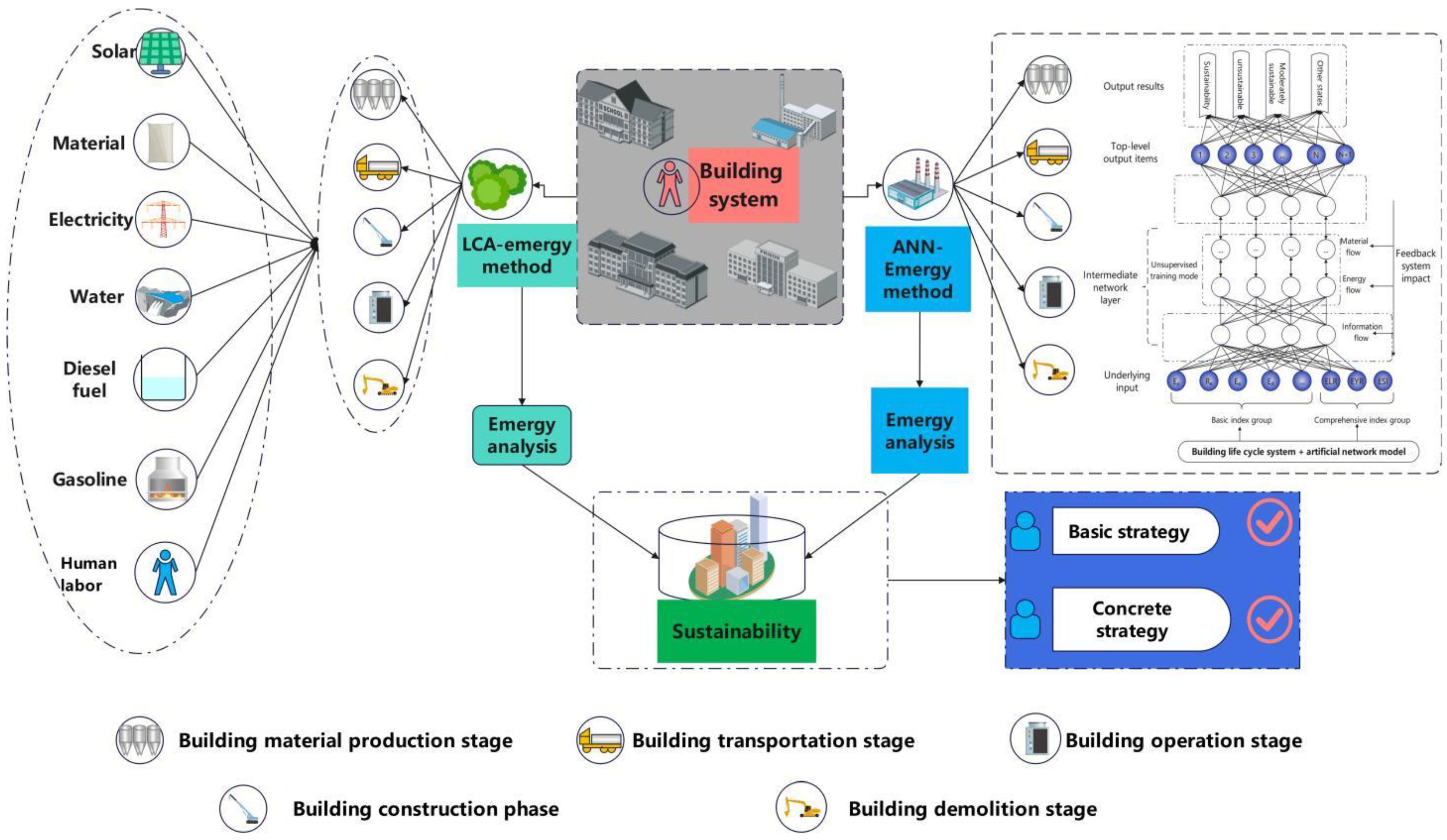
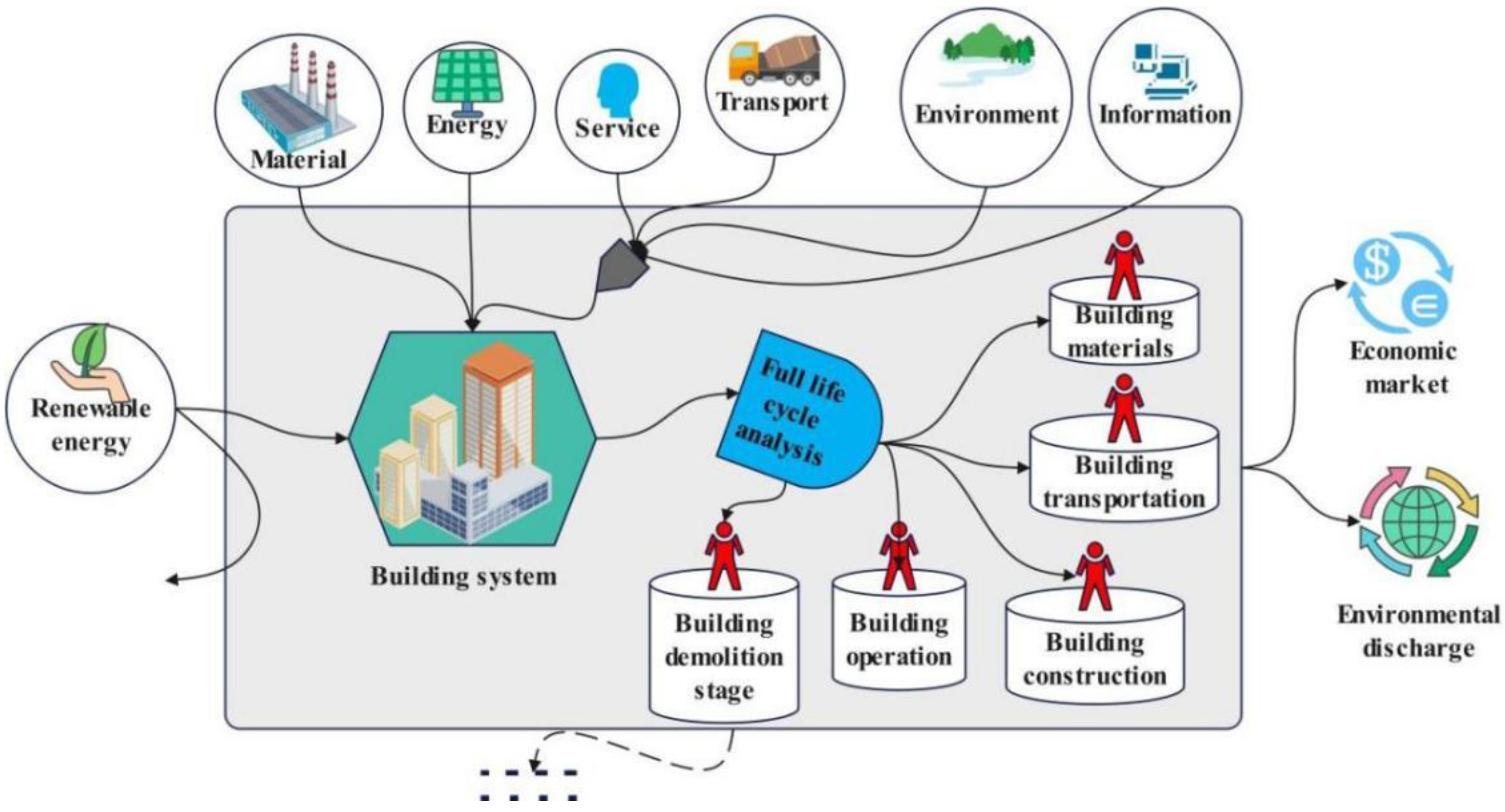
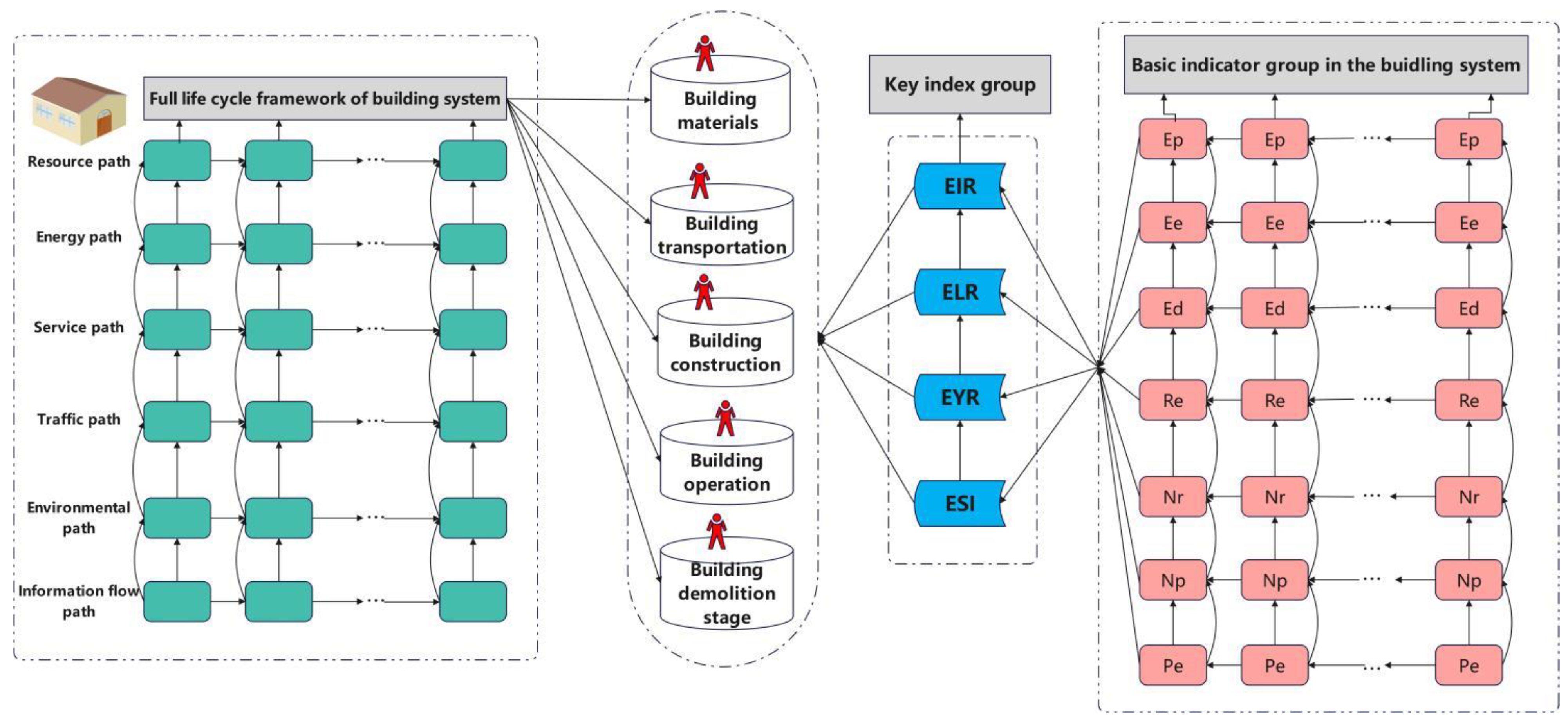
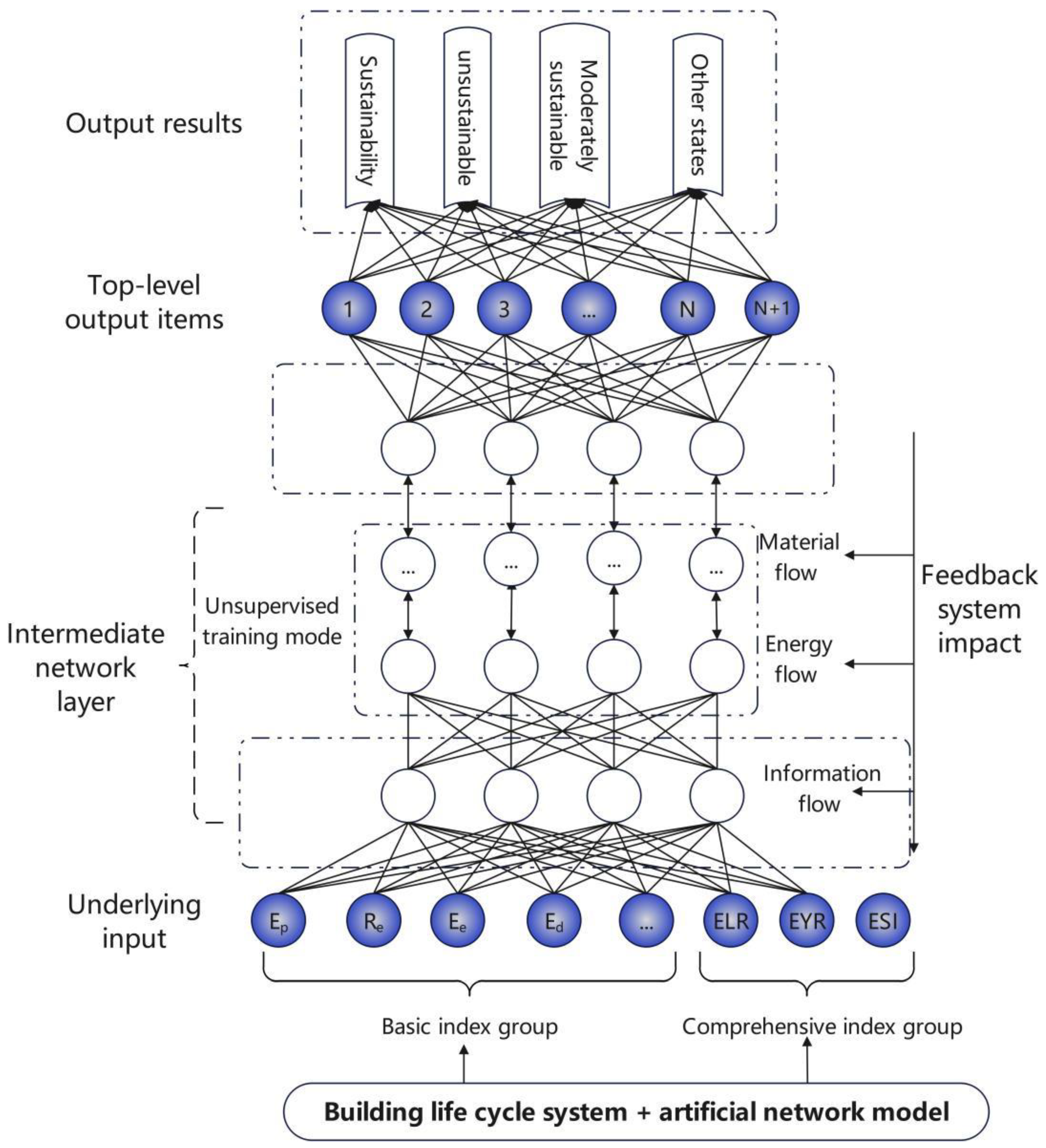
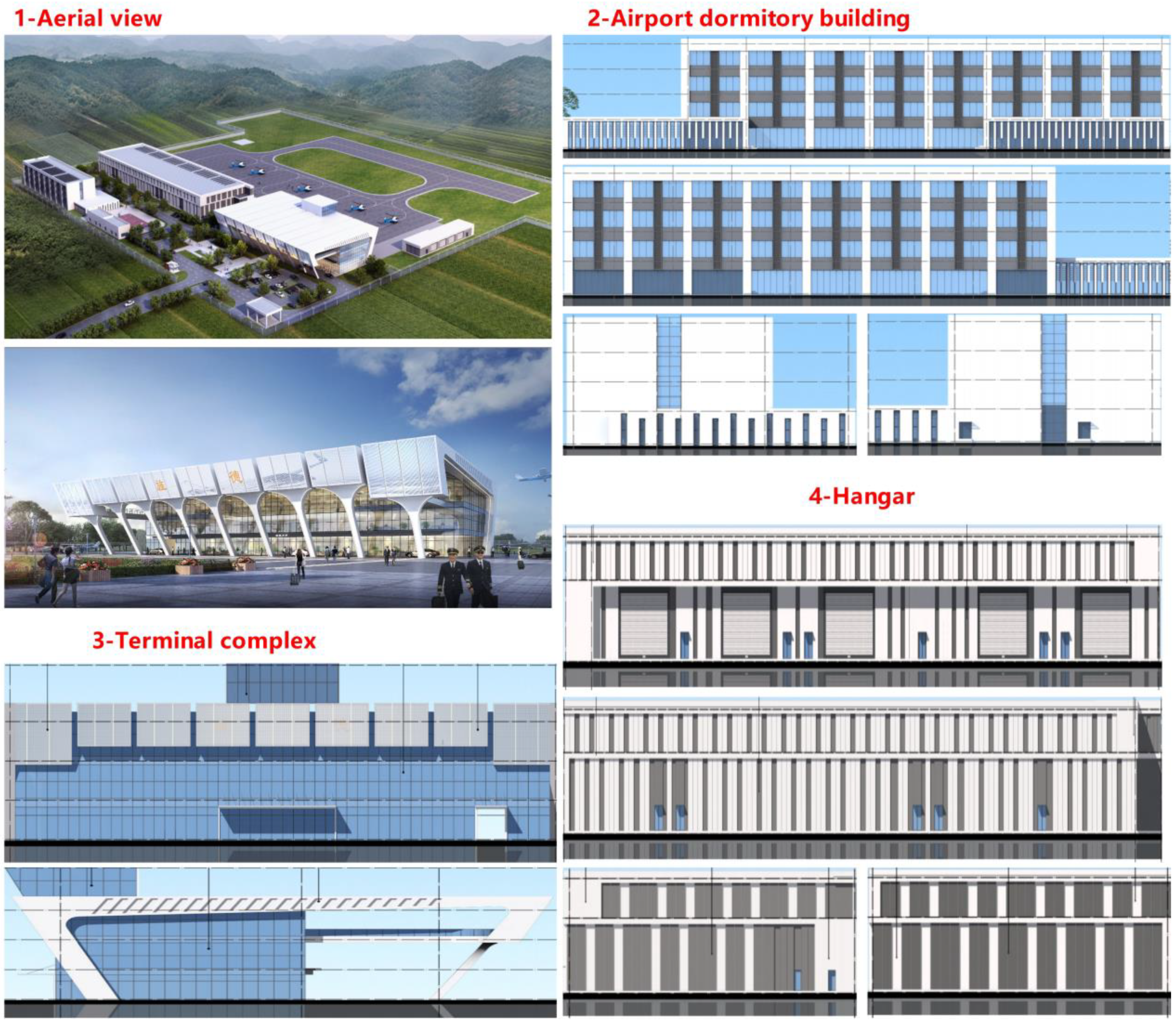
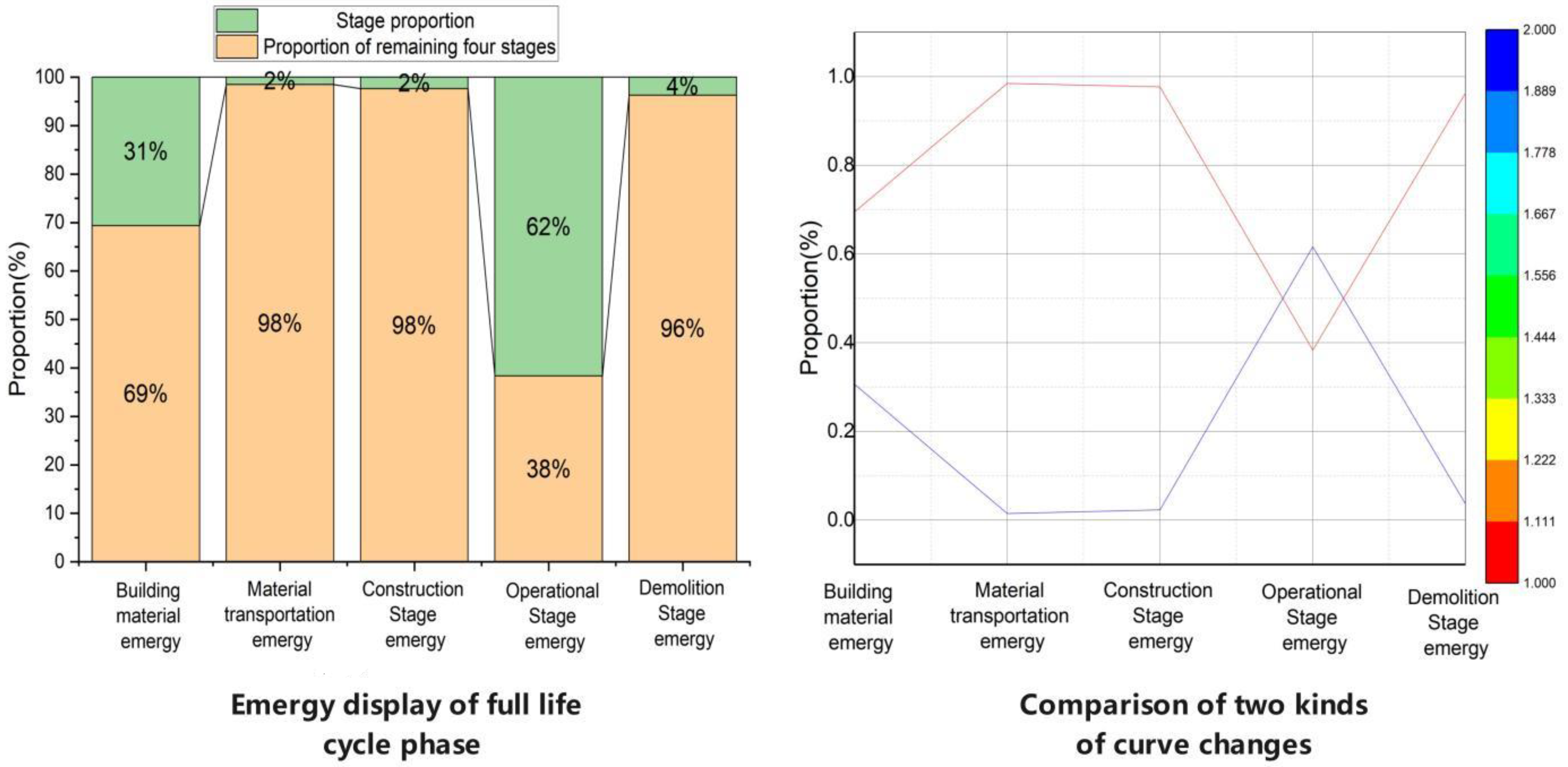
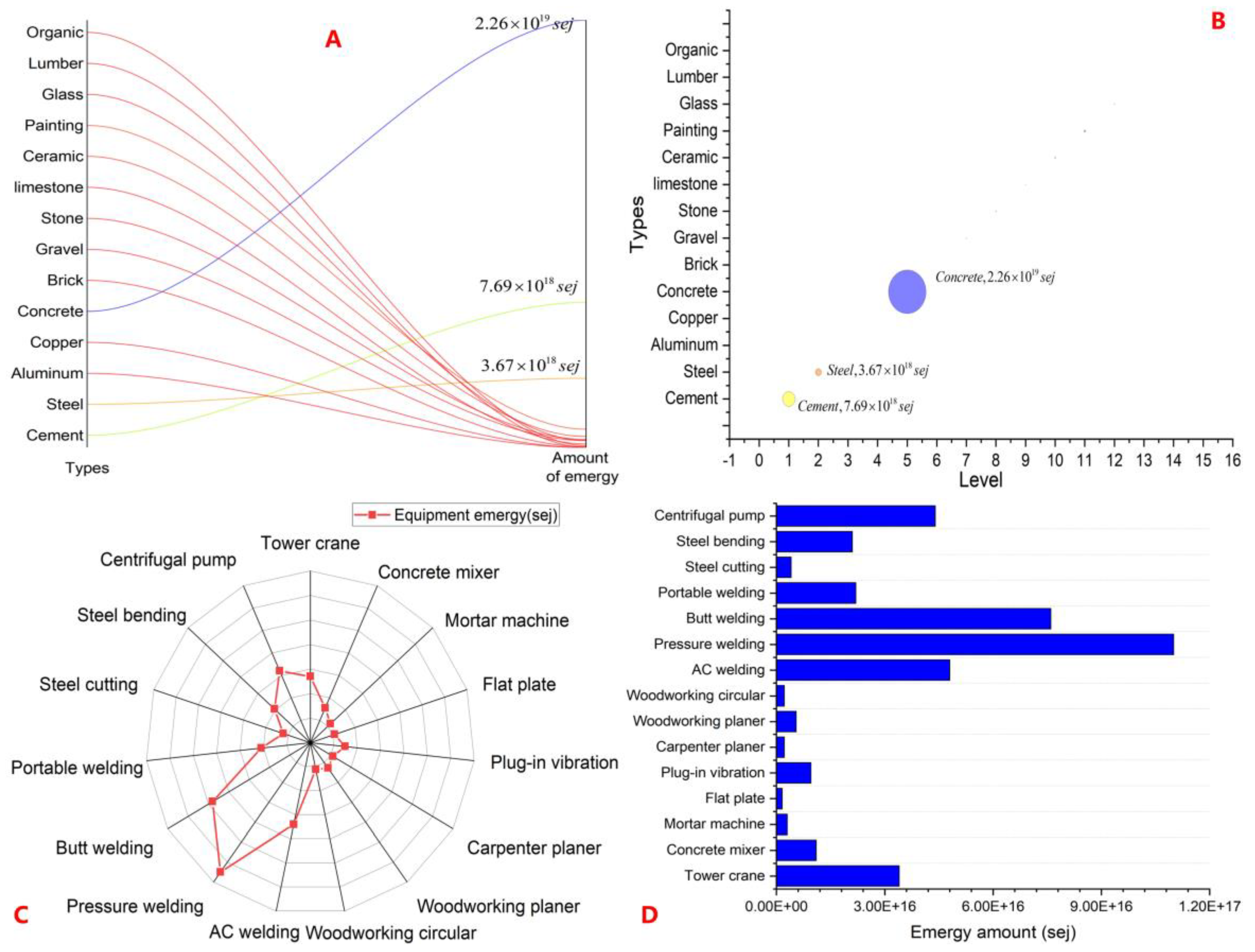
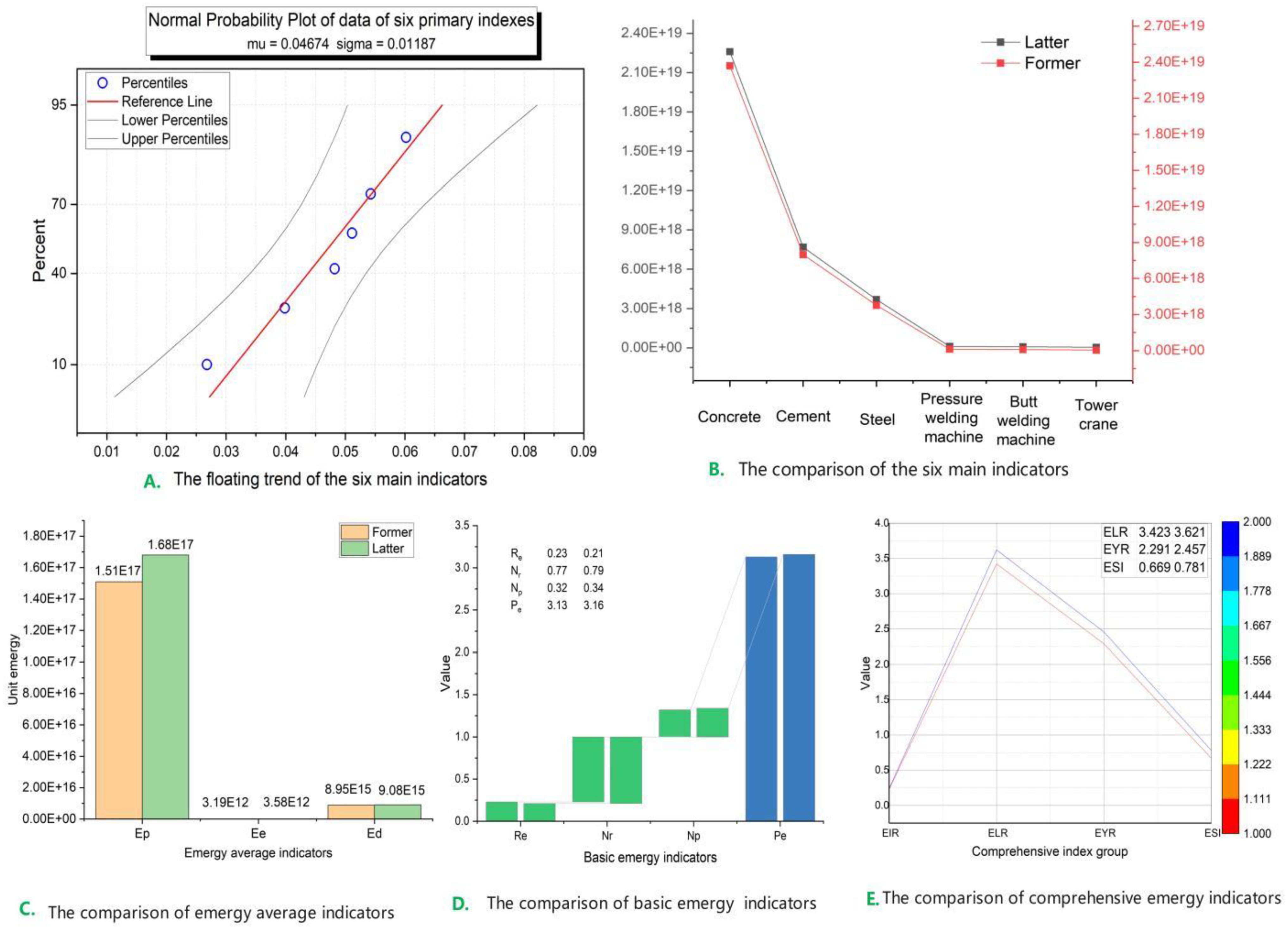

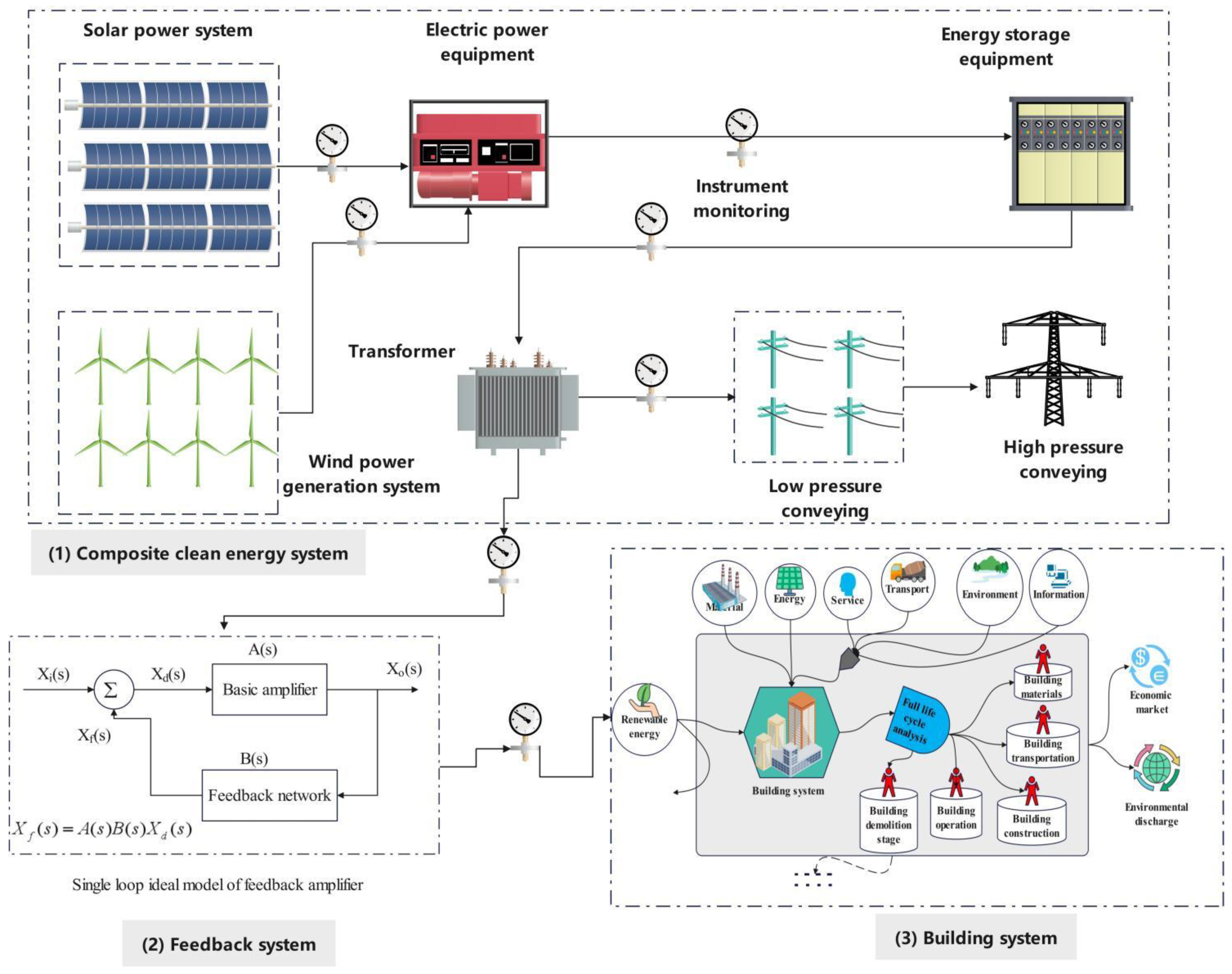



| Year | Author | Baseline | UEV | LCA View | Emergy View | ANN Perspective | Country | Ref. |
|---|---|---|---|---|---|---|---|---|
| 2017 | Hwang et al. | New | × | √ | × | × | USA | [30] |
| 2017 | Jae and William | New | × | × | √ | × | USA | [31] |
| 2020 | Thomas and Praveen | New | × | × | √ | × | India | [26] |
| 2021 | Wenjing et al. | None | × | √ | √ | × | China | [35] |
| 2021 | Suman et al. | None | × | × | √ | × | USA | [24] |
| 2022 | Xinnan et al. | New | √ | √ | √ | × | China | [36] |
| 2023 | Junxue et al. | New | √ | √ | √ | √ | China | This study |
Disclaimer/Publisher’s Note: The statements, opinions and data contained in all publications are solely those of the individual author(s) and contributor(s) and not of MDPI and/or the editor(s). MDPI and/or the editor(s) disclaim responsibility for any injury to people or property resulting from any ideas, methods, instructions or products referred to in the content. |
© 2023 by the authors. Licensee MDPI, Basel, Switzerland. This article is an open access article distributed under the terms and conditions of the Creative Commons Attribution (CC BY) license (https://creativecommons.org/licenses/by/4.0/).
Share and Cite
Xie, F.; Zhang, J.; Wu, G.; Zhang, C.; Wang, H. The Environmental Sustainability Study of an Airport Building System Based on an Integrated LCA-Embodied Energy (Emergy)-ANN Analysis. Sustainability 2023, 15, 7626. https://doi.org/10.3390/su15097626
Xie F, Zhang J, Wu G, Zhang C, Wang H. The Environmental Sustainability Study of an Airport Building System Based on an Integrated LCA-Embodied Energy (Emergy)-ANN Analysis. Sustainability. 2023; 15(9):7626. https://doi.org/10.3390/su15097626
Chicago/Turabian StyleXie, Fei, Junxue Zhang, Guodong Wu, Chunxia Zhang, and Hechi Wang. 2023. "The Environmental Sustainability Study of an Airport Building System Based on an Integrated LCA-Embodied Energy (Emergy)-ANN Analysis" Sustainability 15, no. 9: 7626. https://doi.org/10.3390/su15097626
APA StyleXie, F., Zhang, J., Wu, G., Zhang, C., & Wang, H. (2023). The Environmental Sustainability Study of an Airport Building System Based on an Integrated LCA-Embodied Energy (Emergy)-ANN Analysis. Sustainability, 15(9), 7626. https://doi.org/10.3390/su15097626










